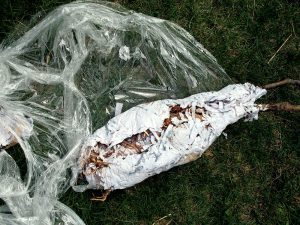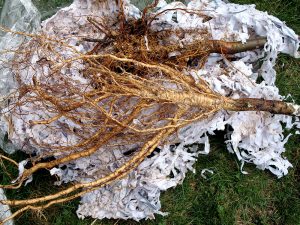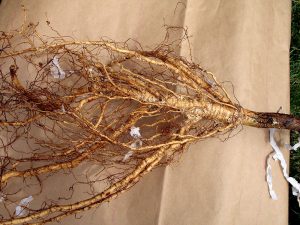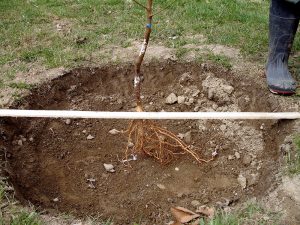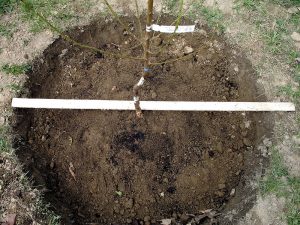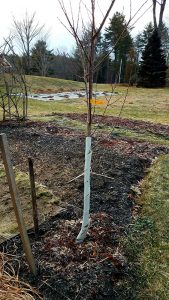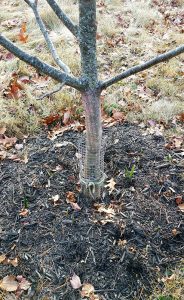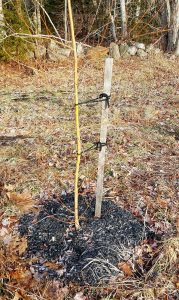
Maine Home Garden News — February 2021
In This Issue:
- A Note from the Editor
- February Is the Month to . . .
- What to Love About Bare Root Plants
- How to Clean and Sharpen Your Pruners
- Show Your Love for Pollinators
- Maine Pumpkin Growers Organization
- Don’t Miss the “Heads Up” Provided by the Detection of a Browntail Moth Web in Smyrna
- Fireside Learning Opportunities
- A Treasure Trove of Information
A Note from the Editor
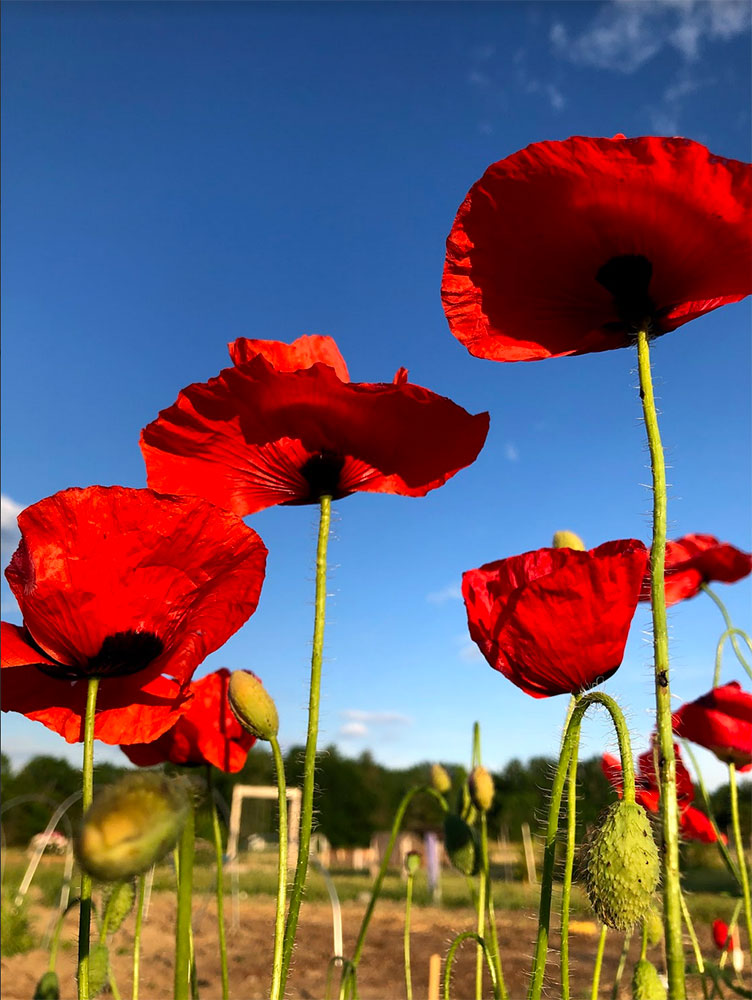
Gardening Friends,
I hope you’re doing well and enjoying the quiet beauty the winter months have to offer.
We loved the feedback and ideas you shared in our survey last fall. As the list of suggestions grew for the upcoming newsletter season, it became apparent that we were going to need more issues in order to fit it all in. So, in the spirit of Valentine’s Day, we are showing our love for our readers by announcing that we will be starting the newsletter earlier this year and transitioning to a NEW year-round format! We wouldn’t be able to do it without our delightful team of volunteer editors: Naomi Jacobs, Barbara Harrity, Abby Zelz, Annika Schmidt, and Phoebe Call. Big thanks to them for signing on this year!
We are looking forward to sharing our passion and expertise in the months ahead and always welcome your feedback.
Warm regards,
Kate Garland, Horticulturist and co-Editor of the Maine Home Garden Newsletter
February Is the Month to . . .
By Kate Garland, Horticulturist, UMaine Extension Penobscot County
- Purchase seeds and supplies. Seed companies are doing their best to keep up with the unprecedented demand for products, but don’t assume that your favorite carrot or beet varieties will be available closer to the growing season. Add some row cover to your order so you’ll be ready to extend the season a little earlier.
- Make an irrigation plan. The past few years have reminded us to not take water for granted. Now is a great time to evaluate where you could benefit the most from a new drip irrigation system and start doing the research on making it happen this year. If it is too costly, or you’re intimidated by the overall process, consider adding a small section this year to see if it’s worth a larger investment in the future.
- AVOID starting most seeds indoors. One of the most common mistakes new gardeners make is starting seeds too early. Tomatoes, peppers, broccoli, basil, cosmos, and zinnia are all examples of crops that should be sown after April 1. Unless you have a great propagation space, starting sooner can lead to lanky, overgrown plants that are more susceptible to transplant shock and nutrient management problems.
- Start onion, leek, shallot, parsley, and pansy seeds indoors. We didn’t say you should avoid sowing all seeds indoors this time of year. Learn more about best practices for starting seeds indoors.
- Order bare root trees or shrubs to add to the landscape. Read more for reasons why you should give bare root plants a try.
- AVOID pruning spring flowering shrubs. Unless you’re okay with sacrificing those precious blooms, spring performers such as forsythia, rhododendron, lilac, azalea, magnolia, and quince should be pruned shortly after flowering. To be clear, pruning them this time of year is not harmful to the plant, it only impacts the cheerful show in your landscape as the days get warmer.
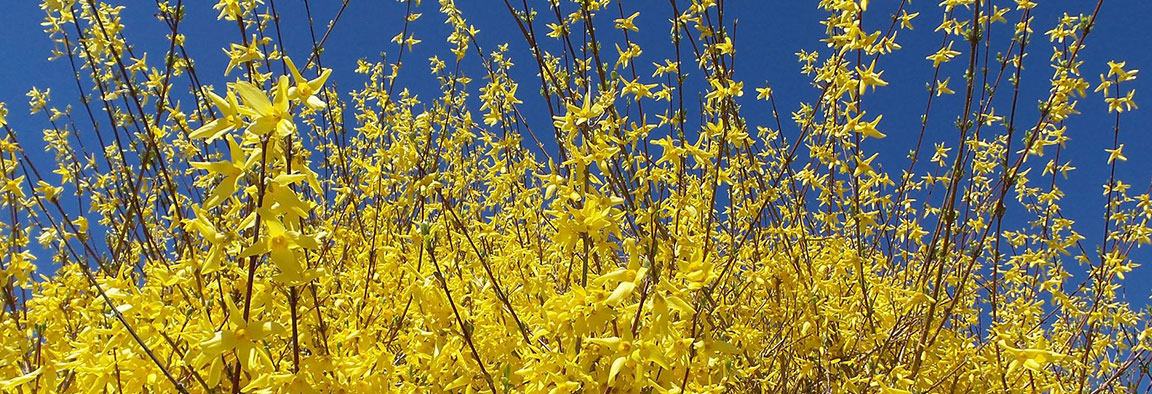
What’s to Love About Bare Root Plants?
By Marjorie Peronto, Extension Educator, UMaine Extension Hancock County.
Photos by Liz Stanley, Extension Community Education Assistant, Horticulture, Knox & Lincoln Counties
What is a bare root plant?
A wide variety of deciduous woody plants are sold bare-root (without soil). A bare root plant is grown in the field until it is the right size to be sold (usually still relatively young), and dug up when dormant. After the soil is washed from the roots, the plant is kept in cold storage, and delivered to you before its buds break. When shipped to you, the roots are usually in a plastic bag, surrounded by insulative material to keep them moist. Bare root plants can only be safely planted when they are dormant and the ground isn’t frozen. In Maine, that is a short window, generally only during the months of April and November.
Bare root plants are resilient!
A simple study was done at Cornell University which compared the root mass in a balled and burlapped root ball with that of a bare root harvested tree of the same size and species. The bare root trees had 200% more roots! The reason for this is that the harvesting machinery for bare root trees digs a much larger root system than the tree spade used for b&b digging. For that same reason, field grown, bare root trees are likely to have a healthier root system than container grown trees, whose roots are confined and prone to circling.
Bare root plants are less expensive.
Bare root trees can be up to 50% cheaper than containerized trees of a comparable size. You save money because you are not paying for the labor required to pot and care for a containerized tree. Tree seedlings grown in the rich soil of nursery beds can be planted more densely and take less maintenance than those in containers. Because bare root plants have no soil, they weigh less, and cost less to ship. If you are thinking about planting a hedge, naturalizing an area, or doing a mass planting, using bare root plants will be much friendlier to your pocketbook.
Bare root trees typically have better long-term establishment.
If handled properly, bare root trees and shrubs are frequently more successful in the long term than containerized plants and b&b plants. You do not have to struggle to tease (and break) roots out of a dense, circling tangle that often occurs in a pot. You do not have to maneuver (and likely damage) a large, heavy root ball of a balled and burlapped plant. You simply gently place the bare roots of your dormant plant in the planting hole, cover, and water. VOILA! Why not give it a try this year?
Basic steps for planting a bare root woody plant.
- Have your planting site selected and ready before your plant(s) arrive.
- Submerge the roots in a bucket of water for a couple of hours to rehydrate them.
- Keep the roots moist, and protected from sun and wind.
- Dig a hole that is large enough to let the roots spread out normally, without being twisted or cramped.
- Use the native soil to mound a cone in the center of hole, hold the plant in place at the proper depth, and then spread the root system over the cone. The mounded cone will help support roots when the backfill soil is replaced.
- Mound a cone in the center of hole, hold the plant in place at the proper depth, and then spread the root system over the cone.
- As soil is added back into the hole, gently pack it around the roots to eliminate air pockets.
- As the soil is added, gently pack the soil around the roots to eliminate air pockets. When the hole is about two-thirds full, fill the hole with water and let it soak in.
- Finish backfilling, create a slight lip around the periphery of the root system, re-water, and cover the entire area with 2 to 3 inches of mulch. Remember to keep the mulch AWAY from the trunk of the tree.
- Planted and staked peach tree with a tree guard.
- Young tree with a mouse guard and mulch.
- Recently planted and staked bare-root willow tree.
For more information:
Handling and Planting Bare Root Plants in the Landscape, Penn State University
How to Clean and Sharpen Your Pruners
By Emma Erler, Education Center Coordinator, UNH Cooperative Extension
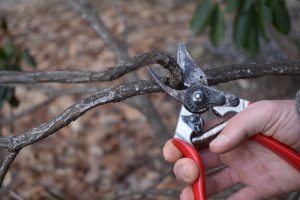
When it comes to pruning, there is nothing better than having a well-maintained pair of pruners with a nice sharp blade. Quality pruners should last for years, and replacement parts are available for many brands. It is far easier to prune with sharp tools and it is well worth taking the time to clean and sharpen them. Not only will having sharp pruners reward you with easier cuts, but those cuts will heal better. Dull pruning tools are likely to crush or tear plant tissue, increasing the likelihood of infection from disease organisms. Click on the video link below to see Emma Erler, Education Center Coordinator, show you step by step how to clean and sharpen your pruners.
Supplies
- Steel wool
- Wrench or multi-purpose tool
- Multi-purpose diamond file(s)
- General purpose oil (3-IN-ONE oil or mineral oil)
- WD-40 for rust removal
- Clean rag
Step by Step Directions
- If your pruners are easy to disassemble, start there. It is much easier to clean and sharpen a detached blade. Take pictures as you take apart your pruners to help you remember how to put them back together. Skip this step if your pruners do not come apart readily.
- Next, remove dirt and grime with warm, soapy water and a scrubby sponge.
- After wiping pruners dry, use coarse steel wool to work off any rust. If pruners are badly rusted apply WD-40 and let soak for 10 minutes. After soaking, remove oil with a clean cloth and use steel wool to get rid of remaining rust.
- Use a diamond file to sharpen the blade. Draw the file along the cutting edge of the blade, applying medium pressure. Be sure to set the file at the same angle as the factory beveled edge of the blade. Only sharpen in one direction starting at the inside of the blade and working outward.
- Once you’re satisfied the pruners are sharp, run a file with fine grit over the backside of the blade to remove any burrs.
- Reassemble your pruners, referring to the pictures you took earlier.
- Try cutting a piece of paper with the sharpened blade. If it makes a clean cut, the blade is adequately sharp.
- Finish by oiling your pruners to lubricate the moving parts and prevent the steel from rusting. Wipe off excess oil with a clean rag.
- Store your pruners in a clean and dry location.
Show Your Love for Pollinators
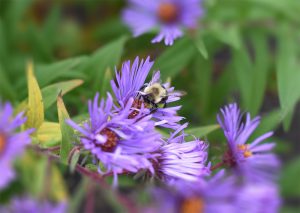 The University of Maine Cooperative Extension is announcing a program designed to celebrate Maine landscapes that support pollinators (bees, butterflies, moths, wasps, flies, beetles, and hummingbirds). Home, school, and community gardeners, as well as farms, are encouraged to apply to have their spaces certified as Pollinator-Friendly. A team of Master Gardener Volunteers and Extension staff are looking for applications that show evidence of key resources that pollinators require for survival and a commitment to environmental practices that protect pollinators.
The University of Maine Cooperative Extension is announcing a program designed to celebrate Maine landscapes that support pollinators (bees, butterflies, moths, wasps, flies, beetles, and hummingbirds). Home, school, and community gardeners, as well as farms, are encouraged to apply to have their spaces certified as Pollinator-Friendly. A team of Master Gardener Volunteers and Extension staff are looking for applications that show evidence of key resources that pollinators require for survival and a commitment to environmental practices that protect pollinators.
Pollinators are essential to the production of fruits and vegetables, as well as for other flowering plants that bring color to each season. Unfortunately, scientists have documented a dramatic decline in pollinators in recent years. Loss of habitat, pesticide use, pollution, invasive species, and climate change have all contributed to this decline.
A successful application will demonstrate that the applicant’s garden contains flowering plants that support and sustain pollinators, with 70% of the species present being native to Maine. The applicant must also show proof that their garden/land provides access to nesting and shelter sites, and protection from pesticides for bees, butterflies and other insects, and hummingbirds. If successful, the applicant will be able to display a sign confirming that their site is certified as pollinator-friendly. Find more information at Pollinator-Friendly Garden Certification or contact Laurie Bowen at 207.942.7396 or laurie.bowen@maine.edu.
Maine Pumpkin Growers Organization
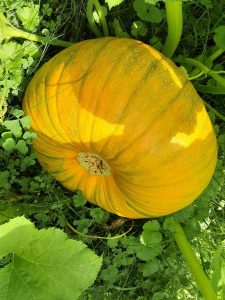 Are you looking for a fun project to do in your garden this summer while you’re sticking closer to home? How about trying to grow a giant pumpkin!? These monsters can grow to be over 2000 pounds, and Maine is a perfect place to grow them with its long summer days. The Maine Pumpkin Growers Organization is a club of passionate pumpkin growers that sends out a newsletter and spring seed packet containing giant pumpkin seeds from the best growers in Maine. They also have several weigh-offs in the fall where you can meet other growers who are more than happy to share their tips and tricks. If you would like more information or would like to join (just $20 a year!), please email sarah.whitty@yahoo.com.
Are you looking for a fun project to do in your garden this summer while you’re sticking closer to home? How about trying to grow a giant pumpkin!? These monsters can grow to be over 2000 pounds, and Maine is a perfect place to grow them with its long summer days. The Maine Pumpkin Growers Organization is a club of passionate pumpkin growers that sends out a newsletter and spring seed packet containing giant pumpkin seeds from the best growers in Maine. They also have several weigh-offs in the fall where you can meet other growers who are more than happy to share their tips and tricks. If you would like more information or would like to join (just $20 a year!), please email sarah.whitty@yahoo.com.
Don’t Miss the “Heads Up” Provided by the Detection of a Browntail Moth Web in Smyrna
By Maine Forest Service contributors: Allison Kanoti, Tom Schmeelk, Aron Bishop, Bill Phipps
The Maine Forest Service says to take this heads up literally: look up at the trees around you for signs of browntail moth winter webs. If you think you’ve found it in an area without documented high populations, let us know. If you don’t know whether where you’ve found it is of interest, please report it.
The detection of browntail moth in Smyrna is not as surprising as it might seem. Why? Among the reasons:
- In recent years, the adults have been captured in light traps in almost every corner of the state (the northwest corner of Maine is an exception).
- It’s not the first time it has been found there; browntail moth webs and caterpillars were found at least as far north as Houlton in the early 1900s.
- Its population today is at a historic high.
- A dry spring in 2020 supported continued population growth, producing a bumper crop of moths in July.
- It is easily moved by people as mature caterpillars, pupae, and adults; other stages are readily moved on live trees and shrubs (that’s how it got here from Europe).
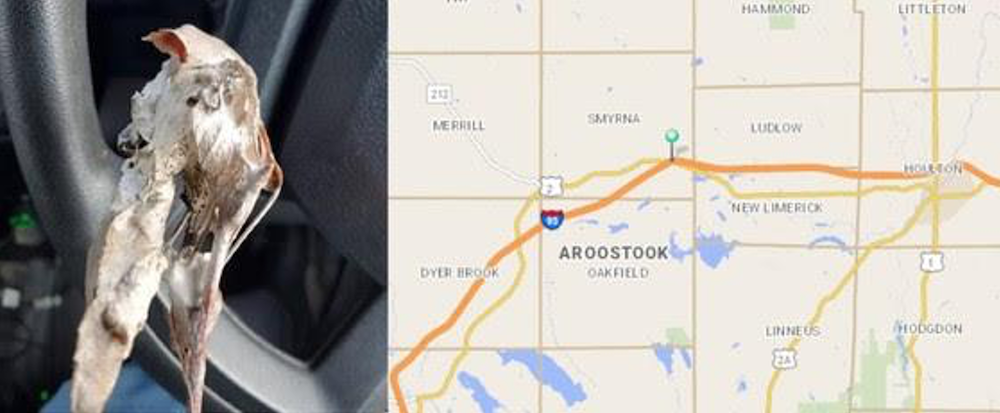
We still talk with Mainers familiar with browntail moth who think that it is just a coastal phenomenon. That was nearly true in the last outbreak which ended in the early 2000s, but the Maine Forest Service has been reporting inland populations in places like Augusta since 2007, and significant populations in Bangor beginning in 2018.
We encourage all Mainers to become familiar with the winter webs of browntail moth. The Maine Forest Service conducts broad scale surveys for the pest, but to understand how it might impact day-to-day life where you are, inspect the trees around you.
Remember these tips:
- Survey on a sunny day with the sun at your back.
- Inspect the tips of the branches on hardwood trees, especially oak, apple, and other fruit trees.
- Look for shining silk tying last year’s leaves to the branch; binoculars help. Web form varies quite a bit: sometimes they are the size of a large fist, sometimes they are a single leaf without much silk; they always have white strands of woven silk holding the leaf tight to the branches.
Resources for survey and management, including a formal survey protocol, can be found on the Maine Forest Service website. An informal survey should help you decide whether to consider management of this pest. Again, if you find this pest in areas where it is not abundant, please report it.
For more information, reach out to us by email or through our web form.
Fireside Learning Opportunities
Now is the perfect time to mentally prepare for the gardening season ahead. Check out these terrific professional development opportunities for the home gardener.
Recorded Sessions — available anytime
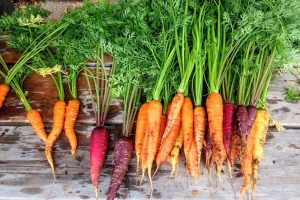 Victory Gardens for ME Video Series
Victory Gardens for ME Video Series
- Episode 1: Vegetable Gardening – Where to Begin
- Episode 2: Planning Your Garden
- Episode 3: Preparing Your Garden Soil
- Episode 4: Get Planting
- Episode 5: Managing Weeds
- Episode 6: How to Water Your Garden
- Episode 7: What’s Wrong With My Plant?
- Episode 8: What to Do With Your Harvest
- Episode 9: Pain-Free Gardening
- Episode 10: Preparing Your Garden for Winter
- Entire series
Invasive Plants
Upcoming Live Sessions — register today
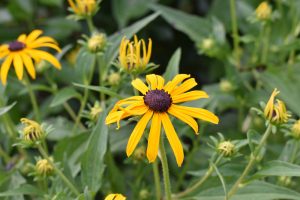 Gardening Workshops
Gardening Workshops
Join the University of Maine Cooperative Extension and the University of New Hampshire Cooperative Extension for a six-part gardening webinar series this winter! Beginning January 13, the winter portion of this series will take place every other Wednesday at 6:00 PM until March 24. These 1-hour webinars will include a 40-minute presentation, followed by Q&A and discussion.
Registration is required with a $5 suggested donation (optional) for each webinar. Participants will receive the Zoom information after registering for a webinar. All sessions will be recorded and shared with participants following the event. If you are unable to attend the live session, please register to receive a copy of the recording and a resource list. Registration closes at 4:00 PM the day of the session.
- Edible Landscaping — Wednesday, February 24, 6:00 – 7:00 PM
- Ornamental Garden Design — Wednesday, March 10, 6:00 – 7:00 PM
- Protecting Fruit Trees from Insects and Diseases — Wednesday, March 24, 6:00 – 7:00 PM
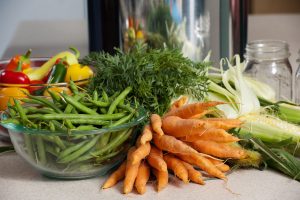
Food Preservation and Nutrition Workshops
Ever wonder how to preserve and use all of that great locally-grown produce? University of Maine Cooperative Extension’s food preservation workshops will teach you the basics of canning and freezing, including how to use pressure canners and water bath canners to preserve pickles, jam, and vegetables. Nutrition workshops deliver cost-effective tips for using local foods in a healthy way. Workshops are taught by UMaine Extension staff and Master Food Preserver volunteers. All workshops will take place virtually until further notice.
- Reducing Food Waste in Your Home Kitchen — February 23, 2:00 – 2:45 PM
A Treasure Trove of Information
by Phoebe Call
Are you looking for practical information about gardening in Maine? Check out the Maine Home Garden News archives. You’ll find 10 years of monthly articles written by UMaine Extension staff, Maine Master Gardener Volunteers, and others. Topics covered include:
- seasonal garden tips
- research-based articles
- book reviews
- MGV profiles
And other information of interest to any gardener. Perusing the archives you’ll find articles on:
- growing garlic (Oct ’16)
- rejuvenating old lilacs (May ’10)
- deer resistant ornamentals (April ’12)
- building a community garden (Oct ’19)
- using fresh herbs in cooking (April ’18)
- drying herbs (July ’15);
- and many others
One of my favorites is “Gardener Confessions: Mistakes, We’ve Made a Few…” These lessons learned spanned two issues, July and August 2020. Find inspiration and prepare for the season ahead with this extensive collection of articles all available at your fingertips.

Do you appreciate the work we are doing?
Consider making a contribution to the Maine Master Gardener Development Fund. Your dollars will support and expand Master Gardener Volunteer community outreach across Maine.
Your feedback is important to us!
We appreciate your feedback and ideas for future Maine Home Garden News topics. We look forward to sharing new information and inspiration in 2020.
Subscribe to Maine Home Garden News
Let us know if you would like to be notified when new issues are posted. To receive e-mail notifications, click on the Subscribe button below.
University of Maine Cooperative Extension’s Maine Home Garden News is designed to equip home gardeners with practical, timely information.
For more information or questions, contact Kate Garland at katherine.garland@maine.edu or 1.800.287.1485 (in Maine).
Visit our Archives to see past issues.
Maine Home Garden News was created in response to a continued increase in requests for information on gardening and includes timely and seasonal tips, as well as research-based articles on all aspects of gardening. Articles are written by UMaine Extension specialists, educators, and horticulture professionals, as well as Master Gardener Volunteers from around Maine, with Katherine Garland, UMaine Extension Horticulturalist in Penobscot County, serving as editor. Special thanks to our team of volunteer editors: Naomi Jacobs, Barbara Harrity, Abby Zelz, Annika Schmidt, and Phoebe Call.
Information in this publication is provided purely for educational purposes. No responsibility is assumed for any problems associated with the use of products or services mentioned. No endorsement of products or companies is intended, nor is criticism of unnamed products or companies implied.
© 2021
Call 800.287.0274 (in Maine), or 207.581.3188, for information on publications and program offerings from University of Maine Cooperative Extension, or visit extension.umaine.edu.
The University of Maine is an EEO/AA employer, and does not discriminate on the grounds of race, color, religion, sex, sexual orientation, transgender status, gender expression, national origin, citizenship status, age, disability, genetic information or veteran’s status in employment, education, and all other programs and activities. The following person has been designated to handle inquiries regarding non-discrimination policies: Director of Equal Opportunity, 101 North Stevens Hall, University of Maine, Orono, ME 04469-5754, 207.581.1226, TTY 711 (Maine Relay System).

